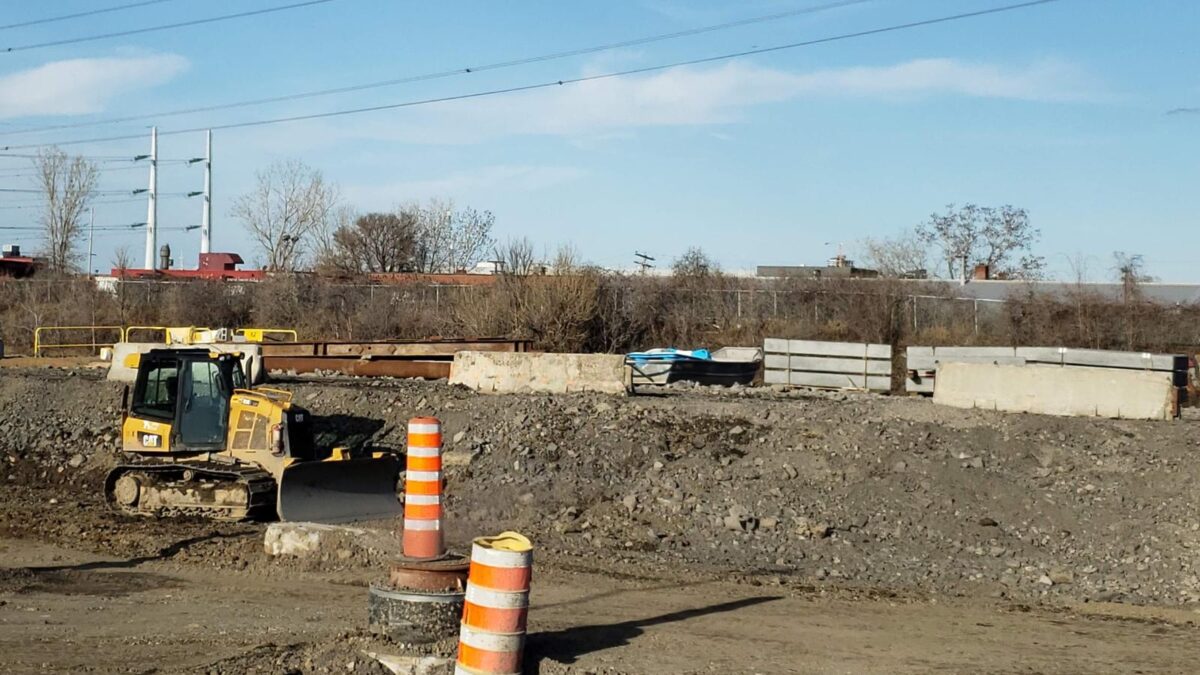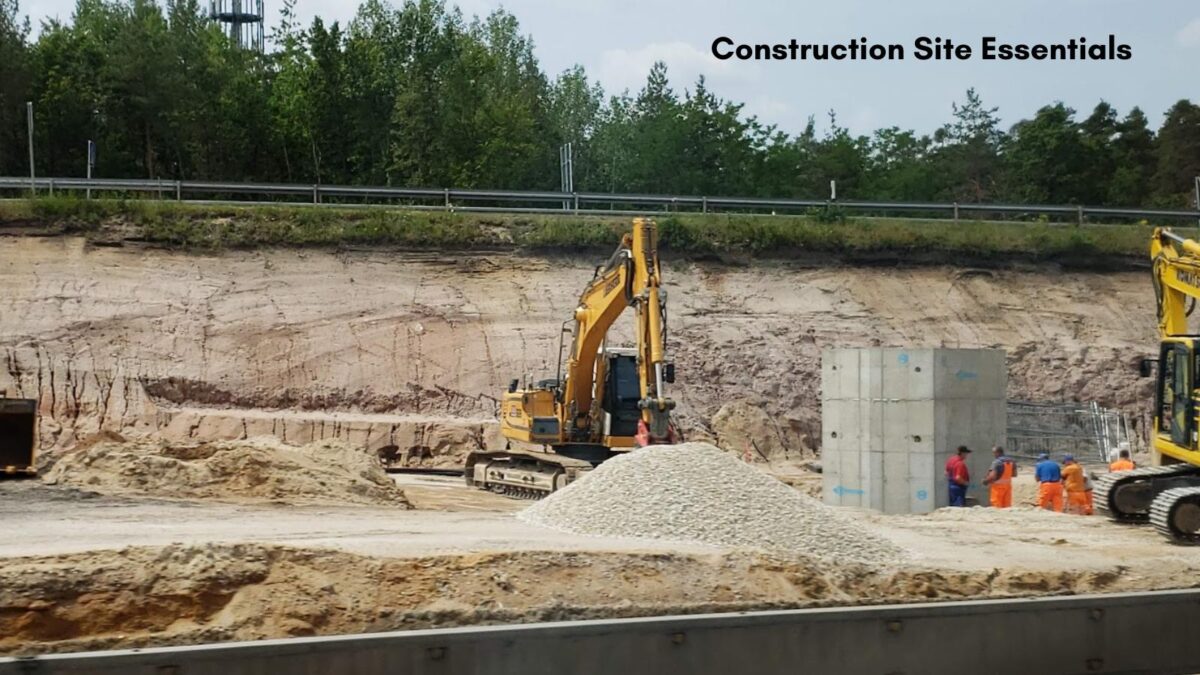Beginning any construction site project is always exciting, but before getting lost in its plans and designs, there are key steps you should take before starting to build. No one wants delays, safety hazards, or compliance issues on their hands when starting construction.
Understanding what your site needs before any dirt has been moved can make the difference between an efficient operation and one fraught with logistical hiccups. From permits and safety plans to scheduling requirements, here’s a checklist for every builder, developer, or project manager looking to launch a successful construction project.
With some planning, coordination, and attention to the details I will discuss, your construction project should run like clockwork, as my husband works on many of them.
Table of Contents
Necessary Permits and Approvals? Check
First things first, paperwork. Even with an outstanding team and design, none of it matters without following all applicable building codes, zoning regulations, and environmental laws.
- Why it Matters: Without proper permits in place, legal action, fines, or forced project suspension could follow—an expense no one wants to incur.
- What to Do: Before starting any construction projects, review the rules set forth by your local government regarding permits for such endeavors. From building permits and zoning variances to environmental permits, always obtain all required clearances before moving ahead with large machinery purchases. Also, keep track of expiration dates, as permits do not last forever.
Consider permits as your VIP pass to a successful job site. You won’t gain entry without one, and don’t want your event (or project) shut down unexpectedly.
Survey and Soil Testing: Know Your Ground
Your land is more than just soil; it forms the basis of your project (literally). Therefore, conducting proper surveys and soil tests is essential to build correctly on that land area. These assessments reveal all about its layout so that you can plan accordingly.
- Surveys: Surveys accurately represent your site, detailing all dimensions and boundaries precisely. Any overlap or easements could create headaches later.
- Soil Testing: Certain soils cannot support certain structures, so testing helps ensure the ground can support weight without crumbling away unexpectedly.
Failing to assess site conditions before building can result in building on unstable ground, leading to structural failures or costly repairs in the future. No one wants their building sinking faster into the earth than their morning coffee break.
Erosion and Sediment Control
Mother Nature can be unpredictable, and the last thing you want for your construction site is for its activities to wreak havoc on the environment. Erosion control measures should be implemented on your construction site to protect it from weather-related setbacks and mitigate environmental impact.
- Install Barriers: Silt fences and retention basins can prevent sediment from traveling off-site.
- Drainage Plans help manage stormwater flow more effectively. The more proactive your setup, the fewer issues will arise when raindrops hit.
Displaying environmental awareness isn’t just good for PR; it may also be legally mandated in your jurisdiction and prevent your site from turning into a muddy swamp.
Temporary Facilities and Utilities
Your crew needs amenities to function effectively, so don’t overlook important services like water, sanitation, and an area for breaks. These are essential amenities that can greatly increase morale and productivity.
- Restrooms: Portable toilets or temporary facilities should be in place before work commences. Have an established contact for rent a potty services to supply and maintain these temporary facilities throughout your project’s duration.
- Electricity and Water Supply: Confirm temporary hook-ups are operational before you need them.
- Storage and Security: Equipment lockboxes and perimeter fencing should be installed to prevent theft.
- Break Area: Construction work can be physically demanding and requires regular breaks for rest and recharge. Create a designated break area with seating, shade, and perhaps snacks or refreshments to ensure everyone stays motivated throughout their shift.
- Parking: Provide workers with adequate parking facilities. Designate an area for vehicle storage that won’t impede construction activities.
Meet these needs to keep your team comfortable and reduce disruptions during the project.
Utility Lines and Underground Checks
To avoid turning your dream project into an embarrassment of riches, identifying existing utility connections is essential to ensure its success. Gas lines, water pipes, and electrical conduits lie hidden below ground. Any collision with these utilities could be disastrous to both your project goals and safety.
- How to Locate Them: Most communities offer service line locating hotlines (similar to “call before you dig”) as a free resource, often saving thousands in repairs and fines down the line. Utilize these resources when possible.
- What’s Next: Make adjustments based on utility locations. A minor modification to foundation plans will make explaining why there’s no electricity much easier for all concerned.

Avoiding utility line mishaps ensures safety, keeps projects on schedule, and helps preserve your reputation from becoming public knowledge.
Develop an Effective Site-Specific Safety Plan
Construction sites can be hazardous environments, but most potential hazards can be reduced or avoided with proper planning. Before breaking ground, ensure all stakeholders understand potential dangers and how they can be mitigated.
- Protective Measures: PPE such as hard hats, gloves, and sturdy boots should be mandatory.
- Hazard Assessments: Acknowledging any particular dangers on site, such as steep gradients or overhead electrical wires, should also be performed as soon as possible.
- Emergency Protocols: Make sure all employees understand what to do if disaster strikes, such as fire, injury, or falling debris. Be prepared and have an action plan ready.
Achieving safety on site can be an essential safety net. Fewer accidents mean happier workers and shorter construction schedules.
Conclusion
Starting any project requires more than simply picking up a shovel and starting to dig. Instead, consider it the beginning chapter in its life story.
By considering all of the essentials listed above and making sure all elements are checked off as you plan for launch day, you can avoid unnecessary delays, costly mishaps, or unexpected complications that arise along the way.




